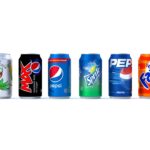Brightly colored, icy, and refreshing, a slushie or an Icee may seem like the perfect treat for a hot day.
However, recent studies warn against giving slushies to children under eight due to a key ingredient: glycerol.
While these beverages are super popular, parents and caregivers must know their potential health risks.
This article explains glycerol, why it’s unsafe for young children, and how we can make informed decisions about our children’s health regarding seemingly harmless but popular frozen drinks.
What is Glycerol, and Why is It Used in Slushies?
Glycerol is a naturally occurring alcohol and sugar substitute frequently used in the food and beverage industry.
It serves an essential role in slushies—it prevents the liquid from freezing solid, giving the drink that signature slushy texture we all recognize.
While glycerol is safe for consumption in appropriate quantities and is even found in some foods, the concentration in slushies is significantly higher.
This is where the concern arises, especially for young children. Their smaller body sizes make them more susceptible to what researchers are now terming “glycerol intoxication syndrome.”
What is Glycerol Intoxication Syndrome?
A study published in the medical journal Archives of Disease in Childhood reviewed the cases of 21 children aged between two and seven hospitalized between 2009 and 2024 (Brothwell et al., 2025).
All fell ill soon after consuming slushies containing glycerol.
The symptoms they exhibited included:
- Loss of Consciousness: Many children fainted or appeared dazed.
- Low Blood Sugar (Hypoglycemia): All affected children were diagnosed with dangerously low blood sugar levels upon arrival at the emergency room.
- Lactic Acidosis: is when the body produces too much lactic acid, leading to organ stress.
- Low Potassium Levels (Hypokalemia): Decreased potassium in the blood can lead to muscle weakness, lethargy, and, in severe cases, heart rhythm issues.
Doctors reported that most cases escalated within an hour of consuming the drink.
While all 21 children recovered quickly after treatment, the incidents raised serious concerns.
Why Are Young Children More Vulnerable?
Children under eight are particularly at risk due to a combination of factors:
- Smaller Body Mass: Their smaller size means they are more affected by high glycerol concentrations.
- Faster Consumption Rates: Numerous incidents occurred when children drank slushies quickly, which could exacerbate the effects.
- Lack of Regulation: There is little transparency regarding the glycerol content in slushies, making it harder to determine what constitutes a “safe” amount for children.
Regulations Regarding Slushie Consumption for Kids in the UK
Experts who examined these incidents have advised revising public health guidelines to protect children better.
The Food Standards Agency (FSA) in the United Kingdom suggests avoiding these drinks for children under four and limiting consumption to one slushie per day for those aged five to ten.
However, researchers propose banning slushies for children under eight altogether, recommending more stringent regulations or age-based guidance.
The possibility of milder, unreported cases of nausea and vomiting further emphasizes the need for tighter safety measures.
Regulations Regarding Slushie Consumption for Kids in the US
Currently, there are no specific federal regulations in the US directly concerning slushie consumption for children. However, food safety authorities, such as the Food and Drug Administration (FDA), oversee and regulate the ingredients used in such beverages to ensure they meet established safety standards.
While the FDA generally recognizes glycerol as safe (GRAS) in limited quantities, the potential risks for younger children, especially those under eight years old, remain a concern due to their smaller body size and differing tolerance levels.
Some states have implemented child-focused nutritional guidelines for schools and childcare facilities.
Still, these typically limit sugar content and promote healthier beverage options rather than addressing specific risks like glycerol.
Are There Any Health Benefits in Slushies?
No. Researchers have made it clear that slushies offer no nutritional value whatsoever.
While glycerol may lower the sugar content compared to traditional sugary beverages, the risks outweigh any perceived benefits.
These beverages are not recommended as part of a balanced diet, especially for young children.
What Can Parents Do?
Parents are encouraged to monitor ingredients and choose beverages that prioritize natural components to align with healthy consumption practices.
Here are some practical steps you can take to avoid potential health risks while still letting your child enjoy a refreshing treat:
- Avoid Slushies with Glycerol: Not all frozen drinks contain glycerol, so check ingredient labels before purchasing. If unsure, ask the retailer.
- Offer Alternatives: Try smoothies or homemade frozen drinks made with natural fruit and yogurt. These not only taste great but also provide nutritional value.
- Limit Portion Sizes: If older children still enjoy slushies, offer them in smaller quantities and encourage slower consumption.
- Know the Symptoms: Be aware of early signs of glycerol intoxication, such as dizziness, nausea, or loss of consciousness, and seek immediate medical attention.
Should You Worry About Older Children?
While the focus is on children under eight, limiting slushie consumption for older kids is still a good idea.
Experts highlight that individual factors, including weight, speed of ingestion, and whether the drink is consumed on an empty stomach, could also lead to adverse reactions.
Are Regulatory Changes on the Horizon?
Public health bodies and researchers are urging stronger regulations, pointing out the lack of transparency about slushy glycerol concentrations.
They also argue that basing recommendations on weight rather than age could offer parents a more personalized safety guideline.
Companies producing slushie products may face increased scrutiny shortly as advocacy for more transparent labeling and safer practices grows.
Increased awareness about the effects of additives like glycerol may eventually guide more tailored policies in the future.
Wrapping Up — Make Health a Priority
While slushies may seem like a fun and harmless treat, the presence of glycerol poses a significant risk to young children.
Parents and caregivers can help ensure their children enjoy frozen treats safely by staying informed, reading labels, and choosing healthier alternatives.
To make the healthiest choices, choose natural frozen drinks and avoid commercial slushies containing glycerol, particularly for children under eight. Remember, their health and safety always come first.
Share this information with other parents or caregivers if you find it useful.
Awareness is key to preventing issues like glycerol intoxication, and your actions can help create a safer environment for our children everywhere.




